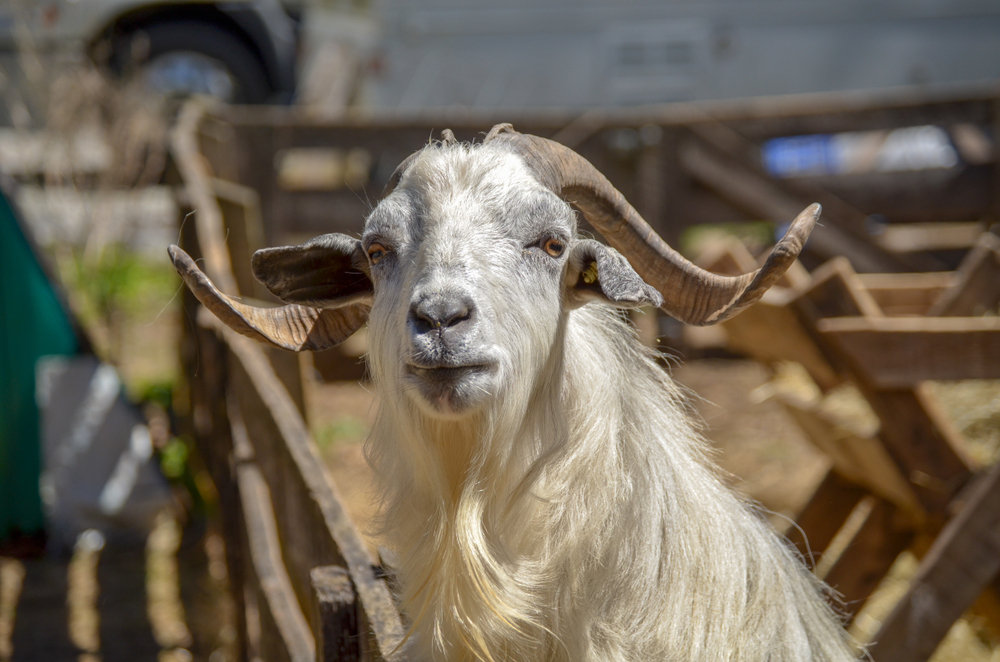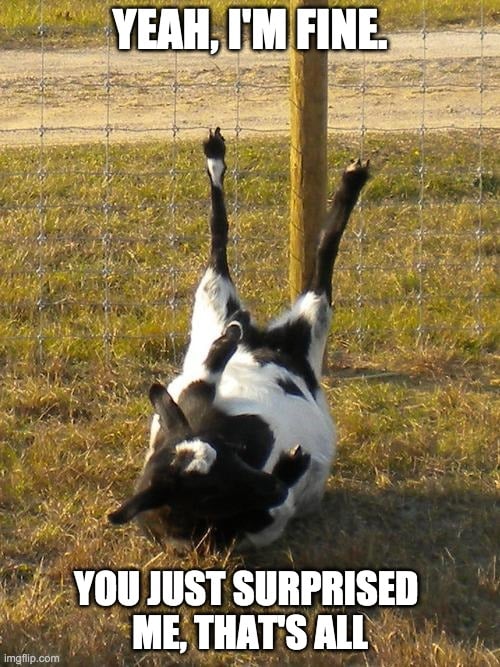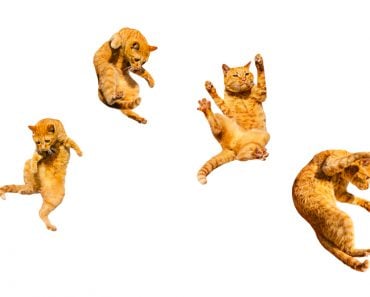Table of Contents (click to expand)
Fainting goats are more formally known as myotonic goats, and appear to faint when startled or surprised because of a rare disorder known as myotonia congenita.
Road trips are wonderful ways to enjoy the natural world and discover new areas of your region. Admiring the local wildlife and livestock is also a major draw for traveling by car, as you never know what you’re going to see! This is particularly true in the southern United States, where some of the goats display a peculiar habit of falling over and apparently fainting when they’re scared! Now, only a small percentage of goats have this odd habit, which is undeniably entertaining—and the source of many viral videos in recent years. The question is… why do some goats faint?
Recommended Video for you:
Tennessee Fainting Goats
If you’ve ever spent anytime in a barnyard, you’ve likely met a few goats‚ full of attitude and silliness and swagger. Most goats have quick reflexes, but aren’t easily frightened, with their horned heads and stubborn demeanor. However, this isn’t true of all goats; the Tennessee fainting goat is an American breed that was first brought to the country at the end of the 19th century. While there were only a handful of specimens back in 1880, their peculiar behavior made them a popular breed, and they quickly spread from Tennessee across the American south.

Thomsen’s Disease
Also known as myotonic goats, this “peculiar behavior” consisted of the goats stiffening in place when they were surprised or scared, causing them to lock up and fall over, appearing to faint. The reason for this unusual habit is a congenital disease, myotonia congenita, more commonly known as Thomsen’s disease. The primary symptom of this disease is the seizing of the skeletal muscles, most notably in the back legs, upon being frightened.Therefore, if you sneak up on a fainting goat, or make a loud noise, it will trigger their fight-or-flight response, which then seems to “short-circuit” in an unusual way.

If you seek out any of the countless videos of fainting goats on the Internet, you will see that the condition manifests differently; sometimes a goat will freeze immediately, all four legs locked in place, and then fall over, legs stiff! However, sometimes a goat will be able to take a few hops to escape the stimuli, but then their legs lock, and they quickly succumb to the force of gravity. While this is amusing to watch, it is the opposite of most fight-or-flight responses. In humans, for example, if something surprises/scares us, our muscles receive an instantaneous burst of energy, often allowing them to tense and then become active, making them able to function better, not worse.
Is Fainting Dangerous For Goats?
While this condition would make it hard for one of these goats to evade a predator, “fainting” and falling over does not typically hurt these creatures. They also don’t actually “faint”, as this suggests that they lose consciousness. No, wooden-leg goats, as they are sometimes called, remain conscious during the entire episode. Remember, this is basically the animal’s fight-or-flight response in overdrive, where their muscles tense up but do not release. This is caused by an improper balance in sodium and chloride ions in the brain, due to a mutation in a critical gene that produces and regulates proteins involved in the flexing and relaxing of muscles.
Most of these “fainting spells” last for 10-20 seconds, about the same length of time as the initial adrenaline rush that humans experience when our own sympathetic nervous system is triggered. Now when most breeders or experts talk about mutations, or congenital disorders, it is typically considered a negative aspect and may be selectively bred out or treated in some way. For some reason, however, the unusual reactions of this fainting goat breed have had the opposite effect, to the point where breeders intentionally retain the mutation and encourage these clumsy goats to reproduce!

What’s even more interesting is that goats aren’t the only creatures that suffer from this disorder. Many other mammals, from mice and dogs to horses and humans, also suffer from this genetic disorder, but in smaller numbers that don’t get nearly as much viral attention. In humans, physical therapy and treatment can help to mitigate the symptoms of Thomsen’s disease.
The good news for goats who are tired of falling over all the time is that older fainting goats demonstrate greater muscle control and are less likely to fall over. When they are triggered or scared, they are often able to hobble away—awkwardly, yes—but they don’t completely freeze and topple to the ground. There are a few reasons for this lessening of the symptoms, including greater familiarity with the surroundings and the environment. As goats get older, they are less likely to be as “jumpy” and their sympathetic nervous system might not be as susceptible to triggering.
A Final Word
The next time you find yourself at a petting zoo in Tennessee, be sure to ask them if they have any fainting goats. It may seem mean to surprise these funny creatures and cause them to take a tumble, but it is specifically this behavior that has made them loved by millions and bred in countless places. Just be sure that you’re sneaking up on a fainting goat, rather than some other variety—perhaps one with horns and a bad attitude!
References (click to expand)
- Why 'Fainting Goats' Really Collapse in Fear. National Geographic
- Lossin, C., & George, A. L., Jr. (2008). Chapter 2 Myotonia Congenita. Advances in Genetics. Elsevier.
- (1965) Induced myotonia in man and goat - Translational Research. Translational Research: The Journal of Laboratory and Clinical Medicine













